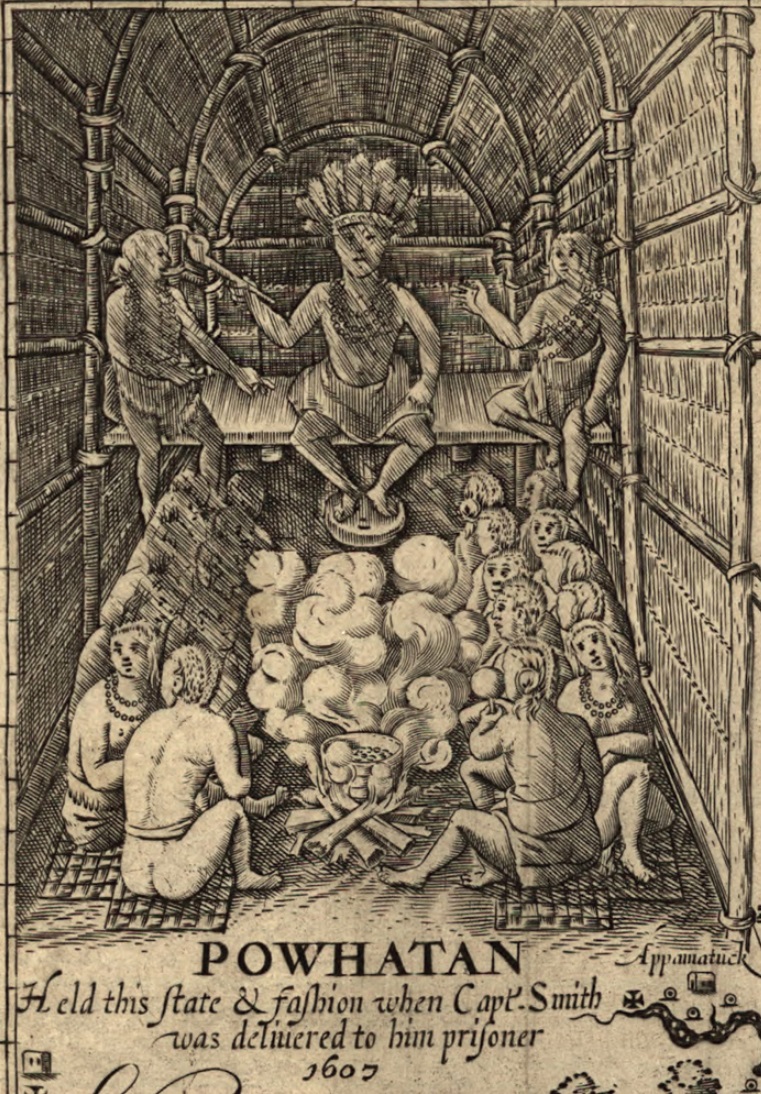With dreams of silver and gold, the late
16th century English conceived plans to found a colony in North America. Their strategy was to build a "bridgehead" on the coast that could act both as a base to raid Spanish galleons (loaded with the aforementioned silver and gold), as well as a forward base to explore the American interior, which at that time was not thought to be particularly extensive.
 |
| Late 16th Century Map of North America |
As such, Queen Elizabeth I granted Sir Walter Raleigh (himself a colorful
character, who
among other things, popularized tobacco usage in England) a charter to establish a colony in North America in
1584. The following year, Raleigh financed a voyage-or-
bust expedition led by
Sir Ralph Lane. He and
107 colonists arrived at
Roanoke Island (in those days, "Virginia," today part of North Carolina's Outer Banks) in June,
1585. Conspicuously, Lane left Roanoke Island shortly thereafter with none other than
Sir Francis Drake, who was stopping by the North American shore on a return trip to England.
Sir Francis Drake
From: http://a3.files.biography.com/image/upload/c_fit,cs_srgb,dpr_1.0,h_1200,q_80,w_1200/MTE5NTU2MzE2MjA1NTgxODM1.jpg
A relief group of fresh colonists was sent from England in
1587 but they found none of the previous colonists at the Roanoke Colony site, and were therefore presumed dead. These
150 colonists (including the first English person born in North America,
Virginia Dare) remained at Roanoke despite a lack of supplies and random attacks from local Indians. Due to an intermittent military conflict with Spain at the time, additional relief ships were not dispatched back to Roanoke Island until
1590. When these ships arrived in August,
1590, every single colonist was gone, although, curiously--perhaps ominously--without a visible sign of struggle or attack around the colony. The only clue to their disappearance was the word "CROATOAN" carved into a nearby tree. Ever since, theories proliferated in an attempt to explain what happened to the vanished colonists.
 |
| English colonists find the "CROATOAN" carving |
Croatoan was in fact the name of another small island in the Outer Banks, but the colonists were neither found there nor was there any evidence they moved there or anywhere else. One explanation given was that at least some colonists experienced
immersion into local Indian tribes. These tales include early 17th century sightings of so-called blond haired, blue eyed "European" looking Indians by later colonists. A similar hypothesis is explored by the
Lost Colony Research group, who strive to explain the mystery of the Roanoke Colony through DNA testing, among other methods.
A contemporary explanation was offered by Chief Powhatan (?-
1618), of the
Tsenacommacah, who told English colonists several years later that his tribe wiped out the colonists because they were found to be living with the
Chesepian (Chesapeake) Indians, his tribe's enemy at the time. However, no empirical evidence has been revealed to substantiate this claim.
 |
| Sketch of Chief Powhatan by Captain John Smith, 1607 |
Still other explanations suggest the colonists perished at sea either in an attempt to sail back to England (they did have a ship), or in an attempt to escape raiding Spanish parties. Again, no hard evidence has substantiated these claims. Other less dramatic explanations site natural phenomenon such as a hurricane or drought, although that does not explain why the structure of the colony itself was found intact--and found without sign of struggle, or corpses.
Whatever may have really happened to those first colonists remains one of the great mysteries of history to this day. Whether recently discovered
map markings hold the secret or not, the Lost Colony of Roanoke continues to cast a peculiar and
popular spell over England's first real foray into North America.











